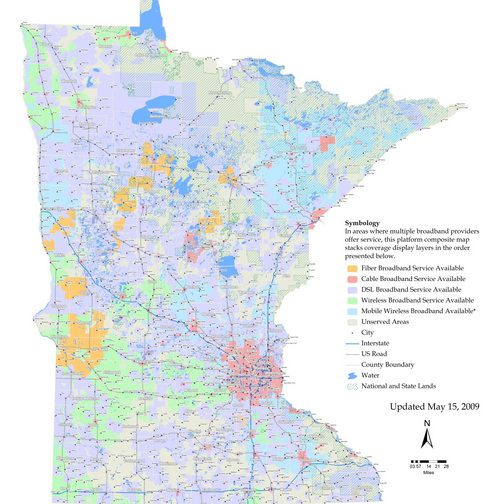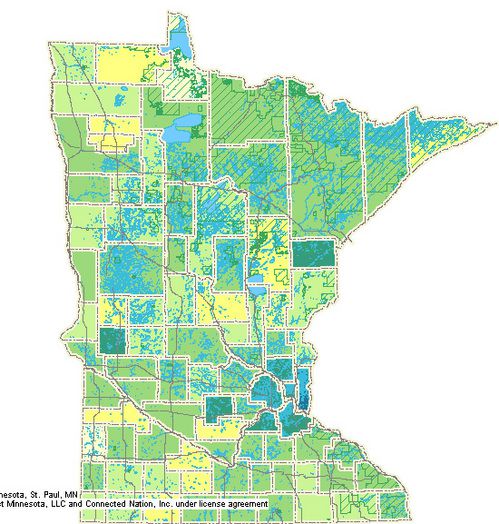This map, showing the availability of broadband in Minnesota, is one of a handful of broadband maps that will be used to figure out how to spend $7 billion in stimulus funds nationwide to improve broadband Internet service. (More maps can be found here)
With so much money at stake, some states are battling over the maps, contending the firm that produced them — Connected Nation, Inc. — is overestimating the availability of broadband in some states and has ties that are too close to the telecommunications companies, according to an article last week in the Wall Street Journal (subscription required). Some cable companies worry the stimulus money will be used for municipal broadband systems that will compete with them.
Diane Wells, the manager of the telecommunications division for the Minnesota Department of Commerce, stood by the integrity of the mapping process in a post on the Connect Nation blog.
” As [the Federal Government] develop[s] a plan for mapping broadband availability across the United States, we invite and encourage you to look closely at Minnesota’s broadband mapping process. We believe you will find an excellent model for mapping broadband availability in such a way that is transparent, verifiable, continuously updated, and perhaps most importantly, practical and valuable for identifying those unserved and underserved areas of Minnesota,” she said.
One upshot of the maps:There’s more broadband coverage in Minnesota than I would have imagined. But the map looks different when it’s broken down by download speed:
Shades of yellow and green represents download speeds beween 200 kilobytes per second (light yellow) and 6 megabytes per second (green), which isn’t much.
Meanwhile, the group Free Press today asked the Federal Communications Commission to increase the amount of competition among broadband providers, suggesting the government should “move past availability” and look instead at speeds that “are too slow and prices that are too high.”


